Zoom
Trash

Reader's theatre. Readers Theatre. Home › Classroom Resources › Lesson Plans Lesson Plan Overview Featured Resources From Theory to Practice Students become excited and enthusiastic about reading when they are presented with the opportunity to participate in Readers Theatre.

Back to top. Whootie's Reader's Theater. RT Tips, Chapter 3 ~ Tips on Reading. Part of the booklet Readers on Stage, Shepard Publications, 2003, and also printed in an earlier version in California Reader, Winter 1995 If this sounds like a description of your reader’s theater attempts, try giving your readers the following tips.
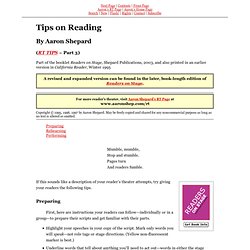
Preparing First, here are instructions your readers can follow—individually or in a group—to prepare their scripts and get familiar with their parts. Highlight your speeches in your copy of the script. Mark only words you will speak—not role tags or stage directions. Even before you give your readers their scripts, you can help them by reading to them the script or its source story. Readers Theater. Reader's Theater Reader's Theater has become really popular in the last couple years as a way to practice and perfect student's fluency and speaking skills.
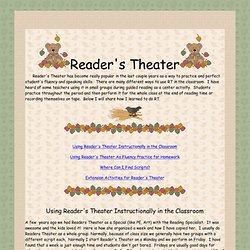
There are many different ways to use RT in the classroom. I have heard of some teachers using it in small groups during guided reading as a center activity. Students practice throughout the period and then perform it for the whole class at the end of reading time or recording themselves on tape. Below I will share how I learned to do RT. Reader's Theater Scripts and Plays for the Classroom. Reader's Theater Scripts and Plays Readers Theater is a dramatic presentation of a written work in a script form.
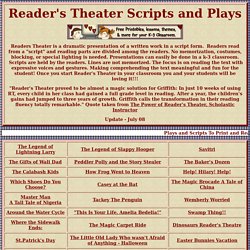
Readers read from a "script" and reading parts are divided among the readers. No memorization, costumes, blocking, or special lighting is needed. Presentations can easily be done in a k-3 classroom. Scripts are held by the readers. Implementing Readers Theatre as an Approach to Classroom Fluency Instruction. This article describes how Readers Theatre was implemented as an engaging means for reading fluency instruction in a second-grade classroom.
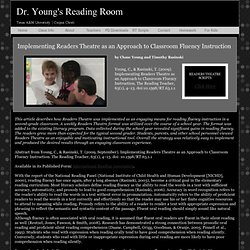
A weekly Readers Theatre format was utilized over the course of a school year. The format was added to the existing literacy program. Data collected during the school year revealed significant gains in reading fluency. The readers grew more than expected for the typical second grader. Students, parents, and other school personnel viewed Readers Theatre as an enjoyable and motivating instructional tool. Abstract from Young, C., & Rasinski, T. (2009, September). With the report of the National Reading Panel (National Institute of Child Health and Human Development [NICHD], 2000), reading fluency has once again, after a long absence (Rasinski, 2003), become a critical goal in the elementary reading curriculum.
The automaticity component of reading fluency is most often assessed through reading rate (Rasinski, 2006). Method Participants. Reader's Theater Editions (Readers Theatre, Free Scripts, Short Children's Plays) Reader’s Theater Editions are free scripts for reader’s theater (or readers theatre) adapted from stories written by Aaron Shepard and others—mostly humor, fantasy, and world tales from a variety of cultures.
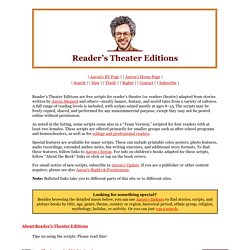
A full range of reading levels is included, with scripts aimed mostly at ages 8–15. The scripts may be freely copied, shared, and performed for any noncommercial purpose, except they may not be posted online without permission. Readers Theatre Scripts. The Reading Room. EducationWorld wants to help you turn your students into the best readers possible.
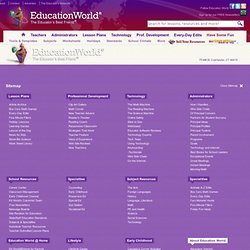
To do that, we have compiled the "Reading Room" a huge list of articles and activities designed to help you teach reading. We start with research-based concepts, ready-to-use tools, and extensions for learning provided by our own "Reading Coach. " After that, we have all sorts of useful tools including scripts for reading aloud in the classroom along with other resources. Tying Read Alouds to Standards This list of suggested activities and strategies will help you make every read aloud count, and assure your principal that you are focused on meeting standards. Glimpses Into Read-Aloud Classrooms Merely inviting students to contribute verbally when you read aloud to them isnt enough. Www.apu.ac.jp/rcaps/uploads/fckeditor/publications/polyglossia/Polyglossia_V14_Ng.pdf.
Reader's Theater Editions (Readers Theatre, Free Scripts, Short Children's Plays) Goodbye, Boring Reading Classes: Using Reader’s Theatre To Spice Up The Reading Class. Reader's Theater: Oral Language Enrichment and Literacy Development for ELLs. Drama is life with the dull bits cut out. — Alfred Hitchcock One of my favorite movies is The Princess Bride, which is based on the novel by William Goldman.

For those of you haven't experienced this classic, the movie begins with a little boy who is sick and home from school, and his grandfather, who offers to read the boy a fairy tale that he had enjoyed when he was young. The boy isn't very interested at first, but soon realizes that he has nothing better to do, and agrees to at least hear the beginning. The story that follows, of course, is an enchanting tale filled with unforgettable characters and exciting plot twists. Despite his best efforts to resist getting drawn in, by the end, the boy is begging his grandfather to finish the story and even admits that he would be ready to hear it all over again if his grandfather returns with the book the next day. What resonates with me in the movie is the experience of a child falling in love with a good story.
Introduction. Resources RT - Drama in the ESL Classroom. Readers Theater. Classroom Strategies. Reader's Theater: Giving Students a Reason to Read Aloud.